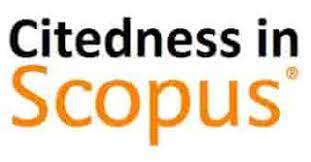Holistic Approaches to Bullying Prevention: The Mediating Role of School Well-Being, Self-Management, and Empathy
DOI:
https://doi.org/10.59373/attadzkir.v3i2.63Keywords:
School Well-Being, Self-Management, Empathy, Bullying BehaviorAbstract
This research aims to examine the influence of self-management and empathy on the tendency of bullying behavior among teenage students through the mediating role of the school well-being variable for students in the three largest Islamic boarding schools in Jember Regency, East Survey Province. This research is a non-experimental quantitative research with a survey design. A total of 160 randomly selected students participated in this survey research. The data that has been collected is then analyzed using the WARP PLS 7 application and the IBM Statistical Package for Social Science (SPSS) version 23 application. The analysis results using WARP PLS 7. Found values that show that: 1) self-management influences the sixth tendency of bullying through school. Well-Being is 13.5%. This result means that the higher the student’s self-control, demonstrated by the ability to control their emotions when teased by friends, the better the social relations between students, teachers, and school employees, which will impact their behavior in avoiding the use of bad words. Put down friends you do not like. 2) empathy influences the tendency for bullying behavior through School Well Being by 23.8%. This result means that the higher the perspective shown by the attitude of trying to see a problem from another person’s point of view, the better the social relations between students and teachers and school employees so that it has an impact on behavior to avoid using bad words to demean friends who are not liked.
Downloads
References
Alwi, M. A., Suminar, D. R., & Nawangsari, N. A. F. (2020). Self Esteem and Support Related to Schools. School Well-Being: As Mediator. International Journal of Pedagogy and Teacher Education, 4(2), 119–125. https://doi.org/10.20961/ijpte.v4i2.42869
Annisa, N. N., Aprilianto, D. S., Suhandani, M., & Jayanti, M. P. (2022). The Role of Education Against Bullying Cases in Indonesia. Khazanah Pendidikan Islam, 4(3), 146–153. https://doi.org/10.15575/kp.v4i3.22860
Astuti, K. M., & Djuwita, R. (2019). Bullying and Place Attachment. School Well-Being as a Moderator. Jurnal Ilmiah Dan Psikologi Terapan, 14(2), 1825–1831.
Aziz, M., Nasution, Z., Lubis, M. S. A., Suhardi, & Harahap, M. R. (2024). Tahfidzul Qur’an Curriculum Media Innovation in Islamic Boarding Schools. Tafkir: Interdisciplinary Journal of Islamic Education, 5(2), 235–249. https://doi.org/10.31538/tijie.v5i2.970
Barbara Coloroso. (2015). The bully, the bullied, and the not-so-innocent bystander. In New York: Taylor and Francis Group, LLC (p. 391).
Baron, R. A., & Geary, S. (2009). Social Psychology of Emphaty. In Pearson Education, Inc. Or its affiliates. United States of America: Pearson Education, Inc. or its affiliates.
Bork-Hüffer, T., Mahlknecht, B., & Kaufmann, K. (2021). (Cyber)Bullying in schools – when bullying stretches across cON/FFlating spaces. Children’s Geographies, 19(2), 241–253. https://doi.org/10.1080/14733285.2020.1784850
Cook, A., Ogden, J., & Winstone, N. (2020). The effect of school exposure and personal contact on attitudes towards bullying and autism in schools: A cohort study with a control group. Autism, 24(8), 2178–2189. https://doi.org/10.1177/1362361320937088
Davison, R. C. R., & Smith, P. M. (2018). Quantitative data analyses. In Research Methods in Physical Activity and Education. https://doi.org/10.4324/9781315158501-17
Diener, E. (1984). Theory and Dimention of School well being. Psychological Bulletin, Vol. 95, pp. 542–575.
Dietrich, L., Jurkowski, S., Schwarzer, N. H., & Zimmermann, D. (2023). The role of teachers in the bullying involvement of students with emotional and behavioral difficulties. Teaching and Teacher Education, 135(September), 104311. https://doi.org/10.1016/j.tate.2023.104311
Edeh, E., Lo, W.-J., & Khojasteh, J. (2022). Review of Partial Least Squares Structural Equation Modeling (PLS-SEM) Using R: A Workbook. In Structural Equation Modeling: A Multidisciplinary Journal. https://doi.org/10.1080/10705511.2022.2108813
Fasya, A., Darmayanti, N., & Arsyad, J. (2023). The Influence of Learning Motivation and Discipline on Learning Achievement of Islamic Religious Education in State Elementary Schools. Nazhruna: Jurnal Pendidikan Islam, 6(1), 1–12. https://doi.org/10.31538/nzh.v6i1.2711
Garandeau, C. F., Turunen, T., Saarento-Zaprudin, S., & Salmivalli, C. (2023). Effects of the KiVa anti-bullying program on defending behavior: Investigating individual-level mechanisms of change. Journal of School Psychology, 99(March), 101226. https://doi.org/10.1016/j.jsp.2023.101226
Hair, J. F., Ringle, C. M., & Sarstedt, M. (2011). PLS-SEM: Indeed a silver bullet. Journal of Marketing Theory and Practice, 19(2), 139–152. https://doi.org/10.2753/MTP1069-6679190202
Hanafi, Y., Taufiq, A., Saefi, M., Ikhsan, M. A., Diyana, T. N., Thoriquttyas, T., & Anam, F. K. (2021). The new identity of Indonesian Islamic boarding schools in the “new normal”: The education leadership response to COVID-19. Heliyon, 7(3), e06549. https://doi.org/10.1016/j.heliyon.2021.e06549
Helmalia, P., & Asyah, N. (2021). The Role of Self Management and Bullying Behavior in Class XI Students of Satria Dharma Perbaungan Private Vocational School T.A 2021/20222. Cybernetics: Journal Educational Research and Sosial Studies, 12(2), 1–10.
Källmén, H., & Hallgren, M. (2021). Bullying at school and mental health problems among adolescents: A repeated cross-sectional study. Child and Adolescent Psychiatry and Mental Health, 15(1), 74. https://doi.org/10.1186/s13034-021-00425-y
Kann, T., Berman, S., Cohen, M. S., Goldknopf, E., Gülser, M., Erlikhman, G., … Zaidel, E. (2023). Linguistic Empathy: Behavioral measures, neurophysiological correlates, and correlation with Psychological Empathy. Neuropsychologia, 108650. https://doi.org/10.1016/j.neuropsychologia.2023.108650
Kelley-Quon, L. I. (2018). Surveys: Merging qualitative and quantitative research methods. Seminars in Pediatric Surgery, 27(6), 361–366. https://doi.org/10.1053/j.sempedsurg.2018.10.007
Khairy, M., Mahmoud, T. M., & Abd-El-Hafeez, T. (2021). Automatic Detection of Cyberbullying and Abusive Language in Arabic Content on Social Networks: A Survey. Procedia Computer Science, 189, 156–166. https://doi.org/10.1016/j.procs.2021.05.080
Markkanen, I., Välimaa, R., & Kannas, L. (2021). Forms of Bullying and Associations Between School Perceptions and Being Bullied Among Finnish Secondary School Students Aged 13 and 15. International Journal of Bullying Prevention, 3(1), 24–33. https://doi.org/10.1007/s42380-019-00058-y
Meyerhoff, J., Beltzer, M., & Popowski, S. (2023). Small Steps over time: A longitudinal usability test of an automated interactive text messaging intervention to support self-management of depression and anxiety symptoms. Journal of Affective Disorders, 118(9), 107990. https://doi.org/10.1016/j.pec.2023.107990
Mohamad, M. M., Sulaiman, N. L., Sern, L. C., & Salleh, K. M. (2015). Measuring the Validity and Reliability of Research Instruments. Procedia - Social and Behavioral Sciences, 204(November 2014), 164–171. https://doi.org/10.1016/j.sbspro.2015.08.129
Moore, H., Sayal, K., Williams, A. J., & Townsend, E. (2022). Investigating the relationship between bullying involvement and self-harmful thoughts and behaviour in young people: A systematic review. Journal of Affective Disorders, 315(September 2021), 234–258. https://doi.org/10.1016/j.jad.2022.07.056
Noboru, T., Amalia, E., Hernandez, P. M. R., Nurbaiti, L., Affarah, W. S., Nonaka, D., … Kobayashi, J. (2021). School-based education to prevent bullying in high schools in Indonesia. Pediatrics International, 63(4), 459–468. https://doi.org/10.1111/ped.14475
O’Higgins Norman, J. (2020). Tackling Bullying from the Inside Out: Shifting Paradigms in Bullying Research and Interventions. International Journal of Bullying Prevention, 2(3), 161–169. https://doi.org/10.1007/s42380-020-00076-1
Richard P. Bagozzi, Y. Y. and L. W. P. (2017). Construct Validity in Organiational Research. Administrative Science Quarterly, 36(3), 421–458.
Rigby, K. (2020). How Teachers Deal with Cases of Bullying at School: What Victims Say. International Journal of Environmental Research and Public Health, 17(7), 2338. https://doi.org/10.3390/ijerph17072338
Ringdal, R., Espnes, G. A., Eilertsen, M.-E. B., BjØrnsen, H. N., & Moksnes, U. K. (2020). Social support, bullying, school-related stress and mental health in adolescence. Nordic Psychology, 72(4), 313–330. https://doi.org/10.1080/19012276.2019.1710240
Ryan, P., & Sawin, K. J. (2009). The Individual and Self-Management Theory: Background and perspectives on context, process, and outcomes. Nursing Outlook, 57(4), 217–225. https://doi.org/10.1016/j.outlook.2008.10.004
Salavera, C., Usán, P., Teruel, P., Urbón, E., & Murillo, V. (2021). School bullying: Empathy among perpetrators and victims. Sustainability (Switzerland), 13(3), 1–9. https://doi.org/10.3390/su13031548
Simpson, N., Wepa, D., Vernon, R., Briley, A., & Steen, M. (2023). Midwifery students’ knowledge, understanding and experiences of workplace bullying, and violence: An integrative review. International Journal of Nursing Studies Advances, 5(March), 100144. https://doi.org/10.1016/j.ijnsa.2023.100144
Smith, L., López Sánchez, G. F., Haro, J. M., Alghamdi, A. A., Pizzol, D., Tully, M. A., … Koyanagi, A. (2023). Temporal Trends in Bullying Victimization Among Adolescents Aged 12–15 Years From 29 Countries: A Global Perspective. Journal of Adolescent Health, 73(3), 582–590. https://doi.org/10.1016/j.jadohealth.2023.04.031
Stingeni, L., Belloni Fortina, A., Baiardini, I., Hansel, K., Moretti, D., & Cipriani, F. (2021). Atopic Dermatitis and Patient Perspectives: Insights of Bullying at School and Career Discrimination at Work. Journal of Asthma and Allergy, 14, 919–928. https://doi.org/10.2147/JAA.S317009
Taguchi, N. (2018). Description and explanation of pragmatic development: Quantitative, qualitative, and mixed methods research. System, 75, 23–32. https://doi.org/10.1016/j.system.2018.03.010
UNICEF. (2022). Bullying In Indonesia: Key Facts, Solutions, and Recommendations. In Unicef.
Useche, S. A., Valle-Escolano, R., Valle, E., & Colomer-Pérez, N. (2023). Gender differences in teenager bullying dynamics and predictors of peer-to-peer intimidation. Heliyon, 9(9). https://doi.org/10.1016/j.heliyon.2023.e20243
Utomo, K. D. M. (2022). Investigations of Cyber Bullying and Traditional Bullying in Adolescents on the Roles of Cognitive Empathy, Affective Empathy, and Age. International Journal of Instruction, 15(2), 937–950. https://doi.org/10.29333/iji.2022.15251a
Wahyuni, & Ernawati, S. (2022). Bullying and Mental Hygiene of Santri at the Jember Islamic Boarding School. Educazione Journal International, 10(8), 11–19.
Yahya, M., Islam, U., Kiai, N., Achmad, H., & Jember, S. (2023). Contribution and Efforts of Islamic Boarding Schools In The Mental And Spiritual Development Of Santri At Darus Sholah Islamic Boarding School, Tegal Besar Village, Jember Regency. AL-WIJDÁN: Journal of Islamic Education Studies, 8(3), 87–99.
Yosep, I., Hikmat, R., Mardhiyah, A., Hazmi, H., & Hernawaty, T. (2022). Method of Nursing Interventions to Reduce the Incidence of Bullying and Its Impact on Students in School: A Scoping Review. Healthcare, 10(10), 1835. https://doi.org/10.3390/healthcare10101835
Zych, I., Ttofi, M. M., & Farrington, D. P. (2019). Empathy and Callous–Unemotional Traits in Different Bullying Roles: A Systematic Review and Meta-Analysis. Trauma, Violence, and Abuse, 20(1), 3–21. https://doi.org/10.1177/1524838016683456
Downloads
Published
How to Cite
Issue
Section
License
Copyright (c) 2024 Rita Pusvitasari, Ahmad Zarkasyi

This work is licensed under a Creative Commons Attribution-ShareAlike 4.0 International License.

At-Tadzkir: Islamic Education Journal by Perkumpulan Dosen Tarbiyah Islam Indonesia is licensed under a Creative Commons Attribution-ShareAlike 4.0 International License.
Based on a work at http://at-tadzkir.pdtii.org/index.php/tadzkir/index.








